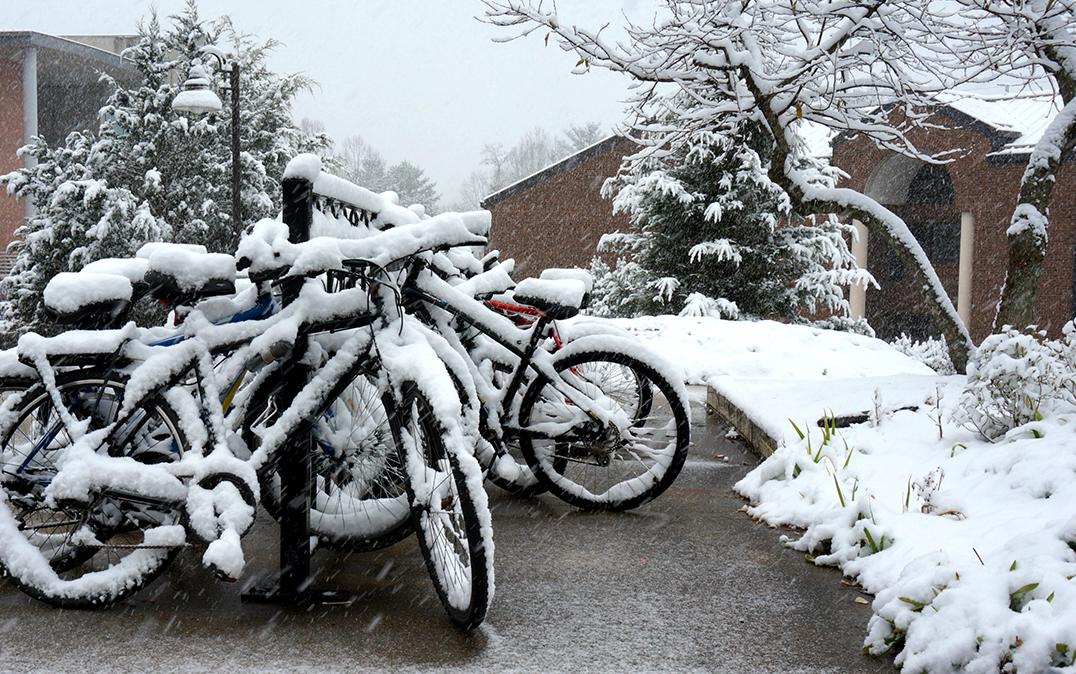Research News
How Heavy Snow Reduces Road Injuries: Less Bicycling, Safer Transport
 Image by Gingo Scott/Shutterstock
Image by Gingo Scott/ShutterstockJapanese study shows intriguing correlation in how heavy snowfall prompts modal shifts from bike riding to other types of transport, thereby reducing serious road injuries
Tsukuba, Japan—Heavy snowfall slows things down and makes it harder to get from point A to point B. But snow clouds have a silver lining—heavy snow may prevent serious road injuries and even save lives. How? By getting people off bicycles and switching to safer modes of transport.
Japanese researchers examined 10 years of police data on road injuries among commuting junior high school students. They found that areas with monthly snowfall of at least 100 cm had almost no bicycling-related injuries. Total injuries among cyclists and pedestrians also fell by 68%. The findings were published in the Journal of Epidemiology.
The logic is quite simple. When there's heavy snow, people can't get around by bicycle—or at least it's a lot harder. So they may switch to public transportation or walking. This "modal shift" may offer a broader solution for road safety.
"There have been studies suggesting, for instance, bus priority lanes or use of public transport can reduce road injuries or deaths," says Professor Masao Ichikawa, a study coauthor from the University of Tsukuba. "But there isn't enough evidence to determine if modal shifts reduce road injuries at a regional or national level."
To examine this, Professor Ichikawa's research team needed a population that switches transport modes wholesale and that also may suffer high road injury rates. School-aged children incur such rates during their commutes. And junior high schoolers, who often bike to school, have to find other ways of commuting in the snowy months.
The researchers calculated injury rates spanning a decade among junior high schoolers across Japan's 47 prefectures. They focused on cyclist and pedestrian injuries. They then plotted these in relation to snowfall and looked at injury rate changes in areas with ≥100 cm (~39.4 inches) of snowfall in at least 1 month of the study period. Areas with heavy snow saw a marked decline in cyclist injuries in December-February, but there was little variation in less-snowy regions.
"This suggests that when the junior high schoolers shifted from biking to other modes of transport, there was a distinct decline in road injuries," Professor Ichikawa says. "Using snowfall as the exposure variable, and with 10 years of nationwide data, we could make some solid estimates. Modal shift may effectively increase road safety, especially in areas where cyclists are at high risk."
Starting in 2011, the United Nations has launched and promoted two decades' worth of action to advance road safety, against the backdrop of 1.3 million annual deaths and 54 million injuries on the world's roads. Professor Ichikawa's study offers clues on how to work to reduce these numbers.
Original Paper
The article, "Reduced road injuries while commuting due to heavy snowfall and ensuing modal shifts among junior high school students in Japan," was published in the Journal of Epidemiology at https://doi.org/10.2188/jea.JE20200504
Correspondence
Professor ICHIKAWA Masao
Faculty of Medicine, University of Tsukuba


